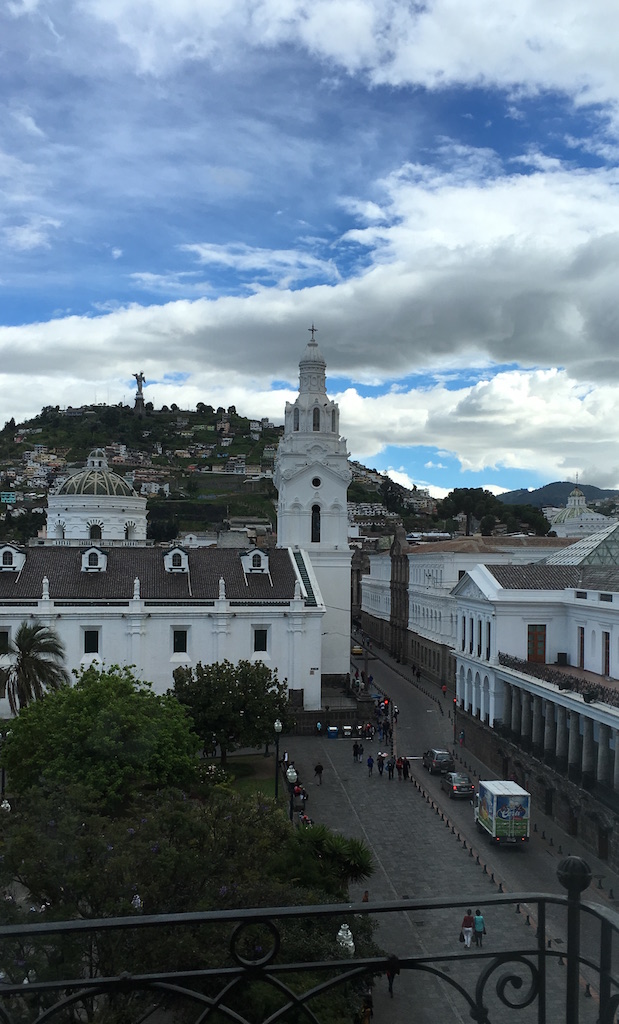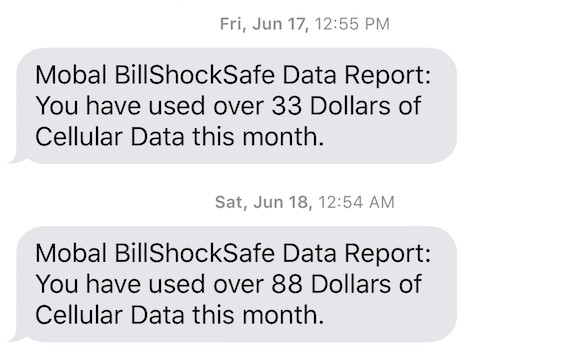
After using Mobal’s International SIM Card in Germany and England, I was hooked!
The convenience of calling hotels, getting directions and sharing photos, regardless of where I was while in Germany and England was more than enough to convince me to bring another International SIM Card on my next trip, that is to the Andean highlands of Ecuador.
Facts about Ecuador
Ecuador is divided into four regions: the Galapagos, Coast, Andes, and Amazonia. It is one of the smallest countries in South America, bordering Colombia in the North, Peru in the South, and the Pacific Ocean in the west.
About 80% of the 14 million people in Ecuador use cell phones. According to cuencahighlife.com, at the end of 2014, 24% of cell phones in Ecuador were smartphones. The major cell phone providers are Claro, Movistar, and CNT. With an official Ecuadorian ID or passport, locals have the option to purchase a pre-paid SIM card at any cell phone provider store.
Smart phones with data plans are becoming more popular among younger folks, especially those under 35.
How I benefited from the International SIM card:
1. Calling a hotel at 5:30 am when our cab driver got lost
After touching down in Quito Mariscal Sucre International Airport at 3:30 am, we decided to wait around in the arrival terminal. Coming off of a red eye flight, we were tired, and our hotel’s check-in time was not until 2 pm. We were more than willing to spend some time resting and waiting in the airport.
At 5 am, we took a cab to our hotel located in Quito’s historic district, figuring there could be a chance we would be able to check in early. It was still dark and cold outside when we got in the cab, and the dense fog made visibility low; a big change from the New York summer weather we had left just hours prior. We were used to the Andean weather, though, as it was our second time in Ecuador’s capital city.
Usually, we pre-arrange transportation from the airport to hotel, but having traveled in Ecuador’s Andean highlands for two months in 2013, we felt confident in taking a cab. Plus, my daughter Bethany is fluent in Spanish, so we had at least one person who could translate in case a problem arose.
Once we were at the narrow and steep streets of Quito’s historic district, our cab driver got lost. The road signs weren’t clear, and he didn’t know where to turn. I got on my phone and called our hotel. Thanks to my international SIM card, I dialed like I normally would at home, and the call went through issue free. The hotel night manager was able to direct the cab driver over the phone, and we promptly found ourselves at the entrance of the hotel 5 minutes later.
Without the SIM card, we would have been lost in the historic district. From that experience, I realized local cab drivers usually don’t know the locations of boutique hotels, like La Casona de la Ronda, which we stayed in.
Note: Most cab drivers in Quito do not use GPSs or phones with data.
2. Getting my SIM card without having to go to a store
In Ecuador and around the globe, cell phone shops and convenient stores sell local SIM cards. For me to get one, I would have had to arrive at my hotel first, and ask around for recommendations or directions to a store. I could not have done that during my trip in Ecuador for these two reasons:
I needed a phone that worked upon arrival
I didn’t have the time to look for a workable SIM card
When in South America, if you don’t speak Spanish, it can be difficult to buy a SIM card. That was my experience when in Santiago, Chile in 2013. I didn’t get a SIM card after speaking to three different Claro representatives in three separate shops.
My international SIM card was delivered to me in New York before my trip to Ecuador. Upon arrival in Quito Mariscal Sucre Airport, I turned off Airplane Mode on my iPhone and within two minutes, Movistar’s network appeared indicating the phone was activated. The data plan, however, was not available immediately. I received a text reminding me of the price per call, text and data usage.

3. Translating English to Spanish with Google Translate
None of the cab drivers we hired in Ecuador spoke English. The international SIM card with data allowed me to use Google Translate to translate from English to Spanish immediately. I was able to have limited conversation with our driver with the help of Google Translate when we were on our way from Alausi to Cuenca (four and a half hours drive).
I was able to ask questions about the landscape along the famous Avenues of the Volcanoes route by using Google translate.

4. Using data at an apartment in Cuenca without WiFi
To access internet at our apartment in Cuenca, we had to walk downstairs and stand at by a gate to get connected to the WiFi in the main building. Most nights when I wanted to check my email or check Instagram, Twitter or Facebook, I used the data from my international SIM card instead of the spotty WiFi.
5. Sharing photos on Instagram and Twitter when traveling 9,500 feet above sea level in Ecuador’s villages
A friend we met in 2013 during our first trip to Ecuador took us to visit his village, Atucloma, located 30 minutes outside of Cuenca. I felt great to have the ability to use technology to share my photos with the world while in a village accessible only by 4X4 on a bumpy dirt road or by foot.
Driving into the clouds in the highlands and surfing the Internet via @mobal SIMcard #ecuador pic.twitter.com/8BdKyJLhvp
— Claudia Looi (@travelwritingpr) June 23, 2016
How the International SIM Card works
1. Just like the international SIM card I used in Germany and England, my pay-as-you-use international SIM card arrived a few days prior to my trip to Ecuador. I inserted the card in my iPhone 6S Plus using the SIM eject tool that came with the iPhone. (You can also use a paperclip if you don’t have an eject tool.) I followed the instructions on Apple.com.
2. To activate, follow the simple instructions given by Mobal. I received a free text message in New York once the card was activated. I also received a free text when I arrived in Quito, Ecuador telling me the cost per call, text and the data usage rate.
3. Since this SIM card, also known as World SIM, is a pay-as-you-use card and not an unlimited data SIM card, I was sent a reminder on the amount used in US dollars every day. This helped me to keep track of how much I spent.

4. I used the card to make calls, and for data to surf the internet and upload photos on Instagram and Twitter. I didn’t use it for receiving or sending texts.
5. I was given a US phone number, making it easy for friends to call me in case of emergency.
6. The SIM card works in Alausi, Riobamba, and Cuenca.
Problems with the SIM card
Besides the one time I used it on our taxi ride from the airport to the hotel, I was unable to use the SIM card in the first two days while in Quito. On the third day, the SIM card worked occasionally. Once outside of Quito, the SIM card worked immediately.
The SIM card did not work in the Cotopaxi National Park area. There was no signal in this remote part of Ecuador, probably due to the area being surrounded by several mountains like Cotopaxi, Corazon, Illiniza Norte, Illiniza Sur, Ruminahui, and Pasochao.
It can be very costly to use this SIM card for data usage. Calling and texting are affordable.
My thoughts
Having an international SIM card while in Ecuador is like buying the assurance of knowing I can call someone if needed. The important phone call I made to the hotel at 5:30 am when it was still dark and the driver was lost in Quito is the perfect example of this. Another instance was in Riobamba at 6 pm (just before dark). We were traveling with a driver who wasn’t familiar with Riobamba and stopped five times to ask people on the street for directions. Eventually, I called the Casa 1881 Hotel in Riobamba and they gave us the directions.
I would recommend getting a Mobal International SIM Card if you are traveling overseas independently on a solo trip, with a partner, or with family members. Unlike with guided tours with professional tour leaders, independent travel requires for you to take care of your meals and your own transportation from place to place. Even if you are traveling on a guided tour, an international SIM card gives you the option to stay in touch with friends and family back home.
About Claudia Looi
Claudia Looi is a writer and world traveler. Drawing from her over 10 years of experience in the travel industry, Claudia’s writes with an insider perspective, conveying stories for travel enthusiasts and new travelers alike. She has visited over 40 countries and has lived overseas for several years. When not traveling, you can find Claudia enjoying a cup of macchiato and working on her coffee site, CoffeeSphere.com. Read more of Claudia’s works on www.travelwritingpro.com.

